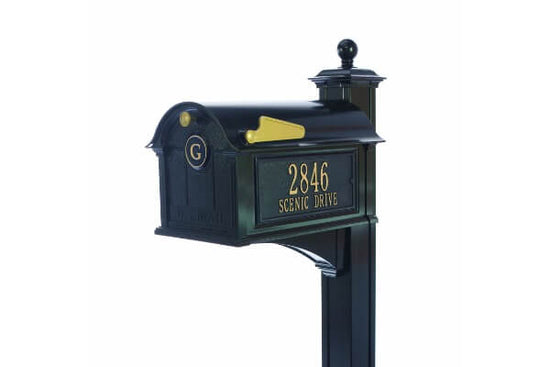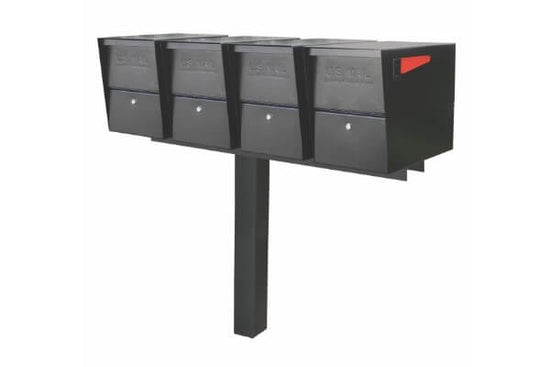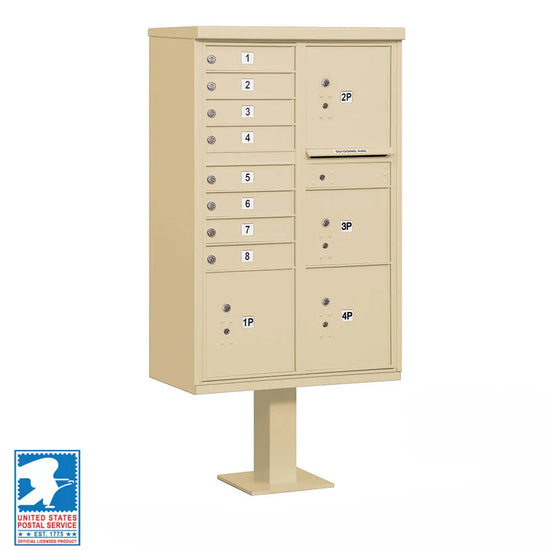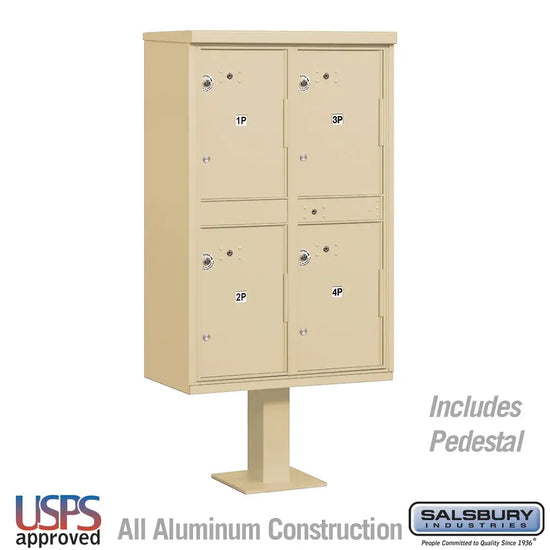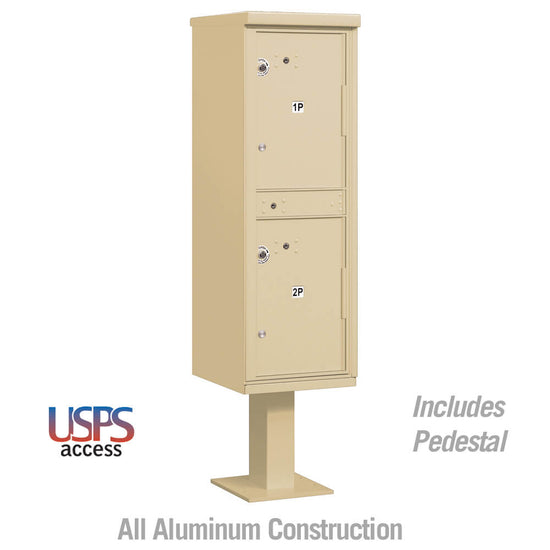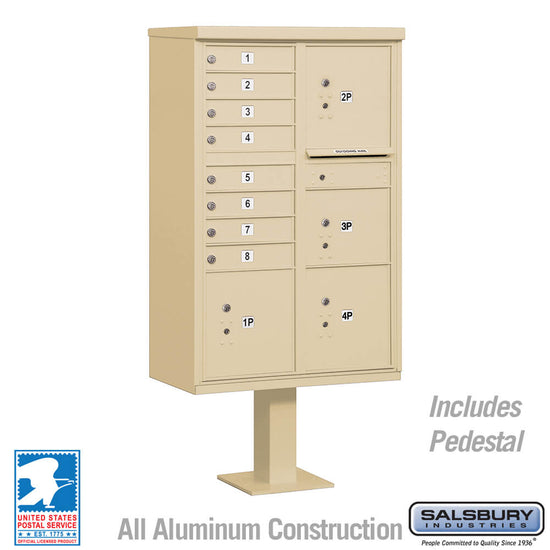Besides being receptacles for your mail, mailboxes are a charming addition to your home’s exterior.
In this guide, we’ll break down wooden mailboxes for you, covering the types, picking the right one, and installation and maintenance tips.
Whether you’re looking for space-saving convenience with wall-mounted options, the timeless appeal of post-mounted mailboxes, or a freestanding mailbox that’s a unique focal point, we’ve got you covered.
Why Choose a Wooden Mailbox?
Wooden mailboxes are usually more budget-friendly than their metal counterparts. They function just as well but are also durable and low-maintenance, which can save you a pretty penny in the long run.
But that’s not all.
Choosing wood is also a win for the environment. Wood is a renewable resource, and many wooden mailboxes are made from sustainably sourced materials, meaning you’re making an eco-friendly choice.
And the icing on the cake?
Wooden mailboxes are a breeze to customize. Paint it, stain it, or add those decorative elements that scream “you.” Think of it like having a mini canvas right outside your front door.
Types of Wooden Mailboxes

Wall-Mounted
A wall-mounted mailbox is an excellent option if you don’t have much front yard space. It attaches directly to the exterior wall of your home, offering a practical space-saving solution for folks with limited front yard space.
With a wall-mounted wooden mailbox, you can easily grab your mail without stepping out to the curb, thanks to its proximity to your front door, which is especially handy during inclement weather.
Plus, this mailbox option comes in various styles, so you’ll find one that complements your home’s look and aligns with your personal preferences.
Post-Mounted
If you’re going for that timeless appeal, post-mounted wooden mailboxes are the classic choice. These are typically set up on a wooden or metal post near the curb or driveway.
They’re visible, making it easy for mail carriers to do their job. These mailboxes offer customization that lets you match them to your home’s style, which adds a touch of curb appeal.
Whether you want that traditional charm or something more unique, options with decorative features like arched mailbox toppers can add a touch of elegance to your mailbox.
Freestanding
Freestanding mailboxes are like small wooden houses for your mail, adding a unique flair to your property. You can personalize them with paint, decorations, or planters.
One key benefit is their portability. You can easily move them within your yard or to a new home, making them versatile for changing outdoor layouts or maintaining a consistent look when changing residences.
Some models come with built-in newspaper holders, while others offer separate options. This adaptability ensures your mailbox meets your needs, seamlessly merging functionality and style.
Choosing the Right Wood for Your Wooden Mailbox

Selecting the perfect wood for your wooden mailbox is crucial in ensuring its durability and appearance. Here’s a quick lowdown of the common wood types for making mailboxes and their durability.
- Cedar: Known for its durability, cedar is a great choice when it comes to wood that naturally fends off decay, rot, and pesky insects. Cedar requires minimal maintenance, and as a bonus, it gives off a lovely, refreshing aroma that can add a unique touch to your outdoor space.
- Pine: While not as tough as cedar, pine wood is a popular choice due to its budget-friendly nature and widespread availability.
- Oak: If you’re after a mailbox built like a tank, oak is a fantastic choice. The hardwood is pricier than cedar and pine, but its durability is top-notch.
- Spruce: Looking for something light on your wallet? Spruce wood is affordable but not as durable as cedar or oak, so it might need a bit more care.
- Mahogany: When you want a wooden mailbox with both durability and a touch of elegance, mahogany is the hardwood to opt for. It’s pricier than cedar, pine, and spruce but offers exceptional longevity and a unique aesthetic.
Ultimately, choosing the wood for your mailbox comes down to what you like, what you can spend, and what you plan to do. Cedar is a good choice for a wood mailbox and gives you a more natural look that doesn’t cost a fortune; plus, it’s strong. But if you want a mailbox that’s tough and lasts a lifetime, go with hardwoods like oak and mahogany.
Setting Up Your Wooden Mailbox
Wooden Mailbox Installation (Post-Mounted)
- Find the ideal location, ensuring it’s compliant with USPS guidelines regarding mailbox height and distance from the road.
- Gather your tools and materials. You’ll need a sturdy mailbox post, a post hole digger, a level, screws, and a screwdriver.
- Dig a hole deep enough to securely hold the post. Alternatively, use a No-Dig Ground Anchor to save you the hassle of digging a hole and mixing concrete.
- Place the post into the hole and ensure it is upright and level.
- Fill the hole with concrete and use a level to keep the post straight while the concrete sets.
- Once the post and concrete are in place, attach your wooden mailbox securely to the post using screws.
Check out this post for a detailed guide on mailbox installation.
For wall-mounted options, choose a suitable wall spot, mark holes, drill, and attach the mailbox. As for freestanding mailboxes, select a yard location, dig a hole, position the post, and secure it with concrete or soil. Attach the mailbox once the concrete dries, and ensure it is level and functional.
Maintenance Tips for Wooden Mailboxes
Maintaining your wood mailbox is key to ensuring it lasts for years. Here are some essential tips:
- Clean your wooden mailbox periodically to remove dirt, grime, and mildew.
- Regularly check for signs of damage like cracks, splits, or loose screws. Address any issues promptly to prevent further deterioration of the materials.
- Apply a wood sealer or stain to protect the wood from the elements and prevent rot and decay.
- If your mailbox is painted, consider repainting it every few years to maintain its appearance and protect the wood.
- Trim any nearby plants that could damage the mailbox or block access and function.
- If your mailbox has a flag, check it for functionality, ensuring it’s easy to raise and lower.
